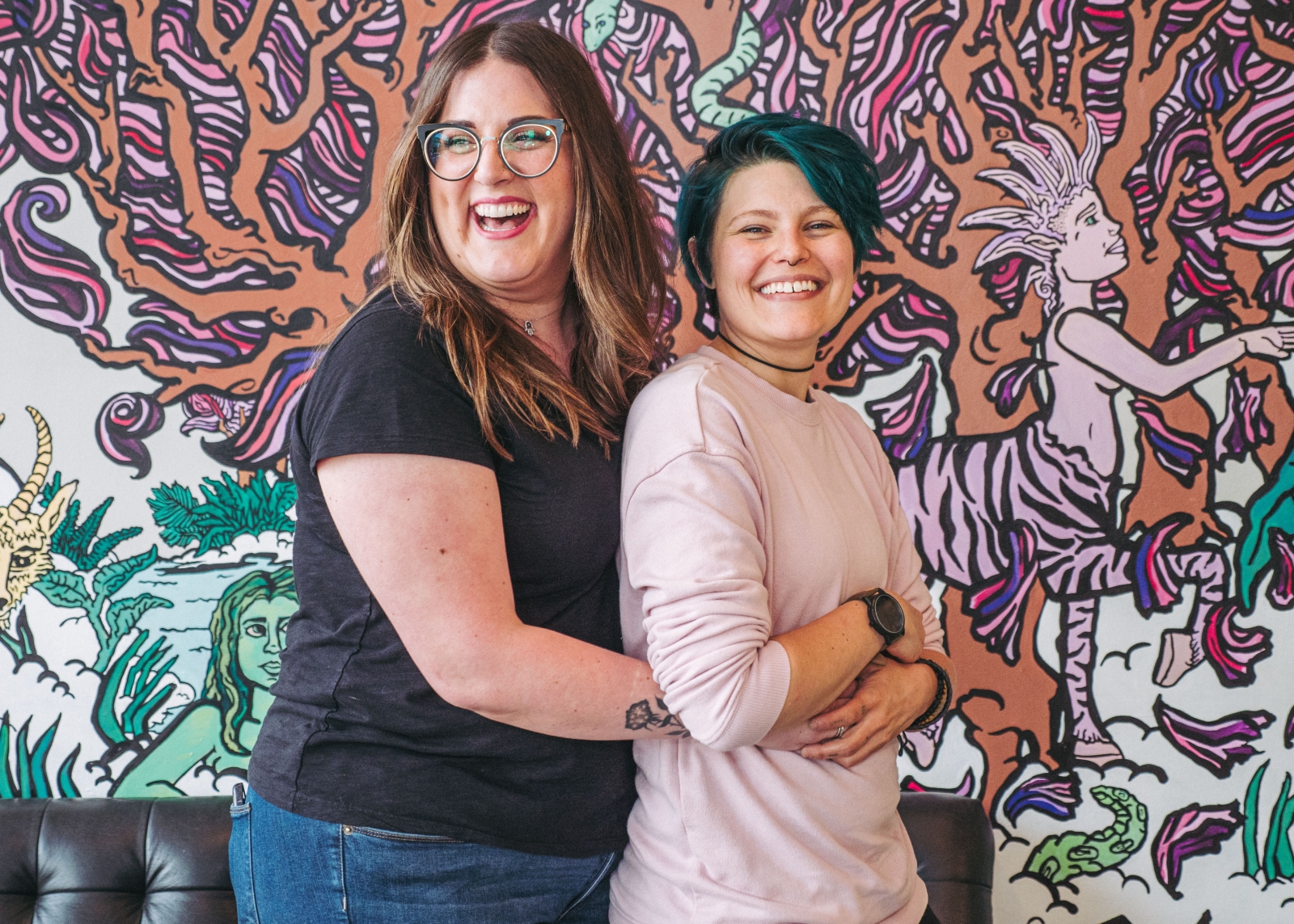For many queer, trans, and gender nonbinary individuals, getting a haircut in a traditional salon — where cuts are often priced and preened according to a strict gender binary — can be an alienating, even dysphoric experience.
Four years ago, Ian Zwick felt disappointed with just about every haircut they got. Not only were the cuts “never even close” to what Zwick wanted, but stylists would often tell them what they'd requested wasn’t “feminine” enough.
Then, Zwick found Barbara&Barbara, a gender-neutral salon in Logan Square.
“It felt like what I wanted was always lost in translation," Zwick says. "But when I got my first haircut at Barbara&Barbara, I was like ‘oh, shit.'"
Barbara&Barbara is far from a conventional hair salon, and that’s exactly how owners Lauren Kieninger and Mandie Williams want it. Colorful murals and paintings by local artists adorn the walls; clients can sip on beer, coffee, or tea while they get their trim. To ensure a comfortable experience, clients are paired with either more talkative or introverted stylists based on their preferences. It’s also not unusual for customers to chat with one another while getting their hair done, cultivating a close-knit community within the salon.
Most importantly, first-timers are asked for their pronouns upon check-in. The receptionists also make note of any changes in pronouns, should regulars identify as something different later on.

“A while ago, I changed my first name to Ian, and it was really nice how no one here made a big deal about it. When I came in, my stylist didn’t forget and just called me by my new name,” Zwick says.
Barbara&Barbara's eight-chair studio currently employs 18 stylists. But before moving to its current location at 2925 West Diversey in 2010, it was a three-chair operation at the back of an art gallery in Garfield Park.
“Mandie and I took over from the previous owners when they decided to move on and not do hair anymore, but the old space was definitely very punk-ish,” Kieninger says. “The original owners chose the name Barbara because it was the most vintage lesbian name they could find.”
It was in those early years that Barbara&Barbara instituted its calling card: unisex pricing. Rather than charge by gender identity, like most traditional salons do, hairdressers charge patrons based on their cut, ranging from $35 for a pixie cut to $55 for extra-long hair.
The policy proved prescient. In 2017, seven years after Barbara&Barbara opened, Illinois passed a law requiring hair salons to provide a full price list of all services upon request, in a bid to curb gender-biased pricing. (On average, women in the U.S. pay between $10 to $20 more than their male counterparts for each haircut, regardless of their hair length.)
When it comes to cultivating gender-inclusive spaces, the greater salon world has been slow to follow suit. But thanks to the efforts of pioneering queer hairdressers, the unisex pricing model is picking up steam. Brooklyn-based Khane Kutzwell has been cutting hair for queer clientele for more than a decade, opening her own brick-and-mortar storefront in 2018. Dez Marshall, who also operates a chair in Brooklyn, has given affordable gender-neutral cuts under the social media handle @DezisDope since 2014. And new, upscale salons — like the Vacancy Project in Manhattan and Salon X in Philadelphia — are increasingly offering unisex pricing.
In Chicago, Barbara&Barbara isn’t the only salon to brand itself as gender-neutral: In 2013, Logan Parlor, also in Logan Square, opened its doors.

Looking forward, Kieninger and Williams are setting their sights on opening another salon rather than expanding their current one again, so that the flagship remains intimate and homey. After all, putting clients at ease is their top priority.
“Hair is something that is so personal and that affects our identity,” Williams says. “Here, we don’t tell people that they should look more feminine or masculine. We help them to look like how they want to look.”




Comments are closed.